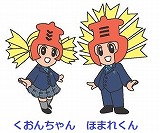第4回地球人カレッジ@Joto
12月18日(水)、ベトナム出身のチャン・ホアンナム先生を講師としてお迎えし、第4回地球人カレッジ@Jotoを開催しました。23名の生徒が参加し、ベトナムの文化や歴史、社会について多くのことを学び、交流を深めることができました。
最初に、ベトナムの基本情報についてお話しいただきました。面積は北海道を除いた日本よりやや小さく、人口は約9,600万人です。平均年齢は30歳未満と若く、人口ピラミッドは山型ですが、二人っ子政策の影響もあり、子どもの数は減少しているとのことです。ベトナムの気候は、北部が四季折々の気候で、高地では稀に雪が降ることもあります。南部は雨季と乾季に分かれており、雨季には洪水が発生することがあるそうです。
ベトナムは長い歴史を持ち、チャンパ王国時代のミソン遺跡は世界遺産に登録されています。ホイアン市には17世紀以前に建てられた日本橋が残っており、当時、貿易に携わっていた日本人によって作られたものだそうです。また、ベトナムは中国文化の影響を強く受けており、旧正月を祝う風習があります。ベトナムの通貨は「ドン」で、硬貨はあまり使われておらず、すべての紙幣にはホーチミン氏の肖像が描かれています。金額の桁が大きいため、実際の価値に合わせてゼロを3つ省略して言うことがよくあるそうです(例:10,000ドンは「10ドン」)。ベトナム経済は1986年の改革以来、毎年6~7%の成長を遂げており、ベトナムに進出する日本企業も増えているとのことです。ベトナムで日本語を学ぶ人や留学する人が多く、現在、日本には約50万人の在日ベトナム人が暮らしており、国別では2位、技能実習生の数では1位を占めています。
次に、ベトナム語の挨拶を学びました。「シンチャオ(こんにちは)」「カムオン(ありがとう)」「シンローイ(すみません)」「タンビエッ(また会いましょう)」などです。ベトナム語は公式言語であり、文書でも広く使用されており、漢字の使用は減少しています。現在では、書道でもアルファベットを筆で書くのが主流だそうです。

その後、ベトナムの多様性についてお話しいただきました。ベトナムは16の宗教と54の民族から成る多民族国家で、人口の約80%を占めるのはキン族です。なんと、ベトナムの人口の約40%が「グエン」という姓を持っており、これが区別を難しくしているため、主に下の名前を使って呼ぶそうです。名前を呼ぶ際には、最後の音だけを取って「ナカムラ」なら「ラーさん」と呼ぶことがよくあります。
少数民族は主に山岳地帯に住んでおり、最も人口が少ない民族は400人未満だそうです。一部の地域では教育の機会に差があり、非識字率が高いところもありますが、少数民族向けに特別な教育プログラムが提供され、教育の普及が進められているとのことです。早婚や自然分娩に伴う母子の健康問題については、日本式の母子手帳が導入され、母子の健康管理がサポートされています。
ベトナム人の国民性については、器用で向学心が旺盛である一方で、家族主義が根強く、交渉力に優れていると日本のサイトには書かれているそうです。チャン先生によると、ベトナム人は計画的に物事を進めるというよりも、臨機応変で目の前のことに集中する傾向があり、誇り高く、勤勉で満足感を得やすいところがあるとのことです。また、朝早くから仕事が始まるため、昼食後には仕事場で自由に昼寝をする文化があります。1日の大半を路上で過ごす人も多く、路上には飲食店だけでなく、散髪店や路上結婚式会場もあり、バイクタクシーや人力車も多いそうです。一方で、路上にゴミが放置されたままになっていることもあり、これが今後の課題だとされています。
ベトナムの主食は麦(パン)、いも、米、野菜で、北部ではフォーや生春巻き、ブンチャやブンタン、中部ではバインミー、南部ではバインセオが有名です。果物ではジャックフルーツやドラゴンフルーツなどが日本人にも食べやすく、おすすめだそうです。水中人形劇のようなユニークな伝統文化や、ダナンの金橋などの観光地についても紹介していただきました。
最後の質疑応答では、ベトナムの学校は早朝から昼までが一般的なので学生は自由に昼寝を取ることができるということや、スープに中身を入れるとシナモンの味がする昆虫が養殖されていること、自然の中で捕獲されることは少ないことなどについても触れていただきました。
最後に、チャン先生に心から感謝の意を表したいと思います。多岐にわたる興味深いお話をしてくださり、ベトナムという国への理解を深めることができました。また、日本で暮らすベトナムの方々についても新たな視点を得ることができ、とても貴重な時間でした。チャン先生、貴重なお話を本当にありがとうございました。今後も、このような素晴らしい交流が続くことを願っております。
On Wednesday, December 18th, we held the 4th Global Citizen's College @Joto with Dr. Tran HoangNam from Vietnam as our guest speaker. 23 students participated, and they had the opportunity to learn a lot about Vietnam's culture, history, and society.
The session began with an introduction to basic information about Vietnam. Its area is slightly smaller than Japan, excluding Hokkaido, with a population of approximately 96 million. The average age is under 30, and the population pyramid is shaped like a mountain, although the number of children is decreasing due to the two-child policy. The climate in Vietnam varies: the northern part experiences four distinct seasons, and snow occasionally falls in the highlands, while the southern part has a rainy season and a dry season, with floods occurring during the rainy period.
Vietnam has a long history, and the My Son ruins from the Champa Kingdom period are listed as a World Heritage site. In the city of Hoi An, the Japanese Bridge, built before the 17th century, still stands. This bridge was built by Japanese traders who were involved in commerce at the time. Additionally, Vietnam has been strongly influenced by Chinese culture and celebrates the Lunar New Year. The currency is the "Dong," and coins are rarely used. All banknotes feature the portrait of Ho Chi Minh. Due to the large number of zeros in the denominations, people often omit three zeros when talking about the value (e.g., 10,000 Dong is called "10 Dong"). Since the economic reforms of 1986, Vietnam's economy has grown rapidly by 6-7% annually, and more Japanese companies are expanding into Vietnam. Many people are studying Japanese and going to Japan for study abroad. Currently, there are about 500,000 Vietnamese people living in Japan, ranking second by nationality, and Vietnam ranks first in terms of the number of technical intern trainees.
Next, the students learned some basic greetings in Vietnamese, such as "Xin Chao" (Hello), "Cam On" (Thank you), "Xin Loi" (Excuse me), and "Tan Biet" (See you again). Vietnamese is the official language of the country and is widely used in documents. The use of Chinese characters has decreased, and now, in calligraphy, it is common to write the alphabet with a brush.
Dr. Tran also spoke about Vietnam's diversity. The country consists of 16 religions and 54 ethnic groups, with the Kinh ethnic group making up about 80% of the population. Interestingly, around 40% of the population has the surname "Nguyen," making it difficult to distinguish individuals by their family name. As a result, people mainly use their first names. When addressing someone, it is common to use only the final part of the name, so for example, someone named "Nakamura" would be called "Mr. La." Ethnic minorities mainly live in the mountainous regions, and the least populous ethnic group has fewer than 400 people. While some areas face educational disparities and higher illiteracy rates, special educational programs are being provided to promote education among these minority groups. Issues related to early marriages and maternal and child health have led to the introduction of Japan’s maternal and child health handbook to support health management.
Regarding the national character of the Vietnamese people, he found a Japanese website that says they are skilled and eager to learn, while also having strong family values, and are being excellent in negotiations. According to Dr. Tran, Vietnamese people tend to be more flexible and focus on what is in front of them, rather than following rigid plans. They tend to be proud, diligent and quick to find satisfaction. Work starts early in the morning, and it is common to take a nap at work after lunch. Many people spend most of their day on the streets, where not only food stalls but also barber shops and even street wedding venues are common. Motorbike taxis and rickshaws are also widespread. However, one of the ongoing challenges is the littering problem in some areas.
The main staples in Vietnam include wheat (bread), potatoes, rice, and vegetables. In the north, dishes like Pho, spring rolls, Bun Cha, and Bun Thang are famous, while in the central region, Banh Mi is popular, and in the south, Banh Xeo is a specialty. Fruits like jackfruit and dragon fruit are also recommended, as they are easy for Japanese people to eat. Dr. Tran also introduced unique cultural traditions like water puppetry, where performers control puppets in water, and tourist spots like the Golden Bridge in Da Nang.
During the Q&A session, Dr. Tran shared interesting facts, such as how students in Vietnam often have a long break in the afternoon and can nap freely, and how a certain insect used in soups tastes like cinnamon, and is mostly farmed rather than caught in the wild.
Dr. Tran's fascinating and diverse stories allowed us to gain a deeper understanding of Vietnam, not only as a country but also of the Vietnamese people living in Japan. It was a truly valuable time. Thank you very much, Dr. Tran, for your valuable insights. We look forward to continuing such wonderful exchanges in the future.
〒770-0853
徳島県徳島市中徳島町1丁目5番地
TEL:088-653-9111
FAX:088-653-3103




















